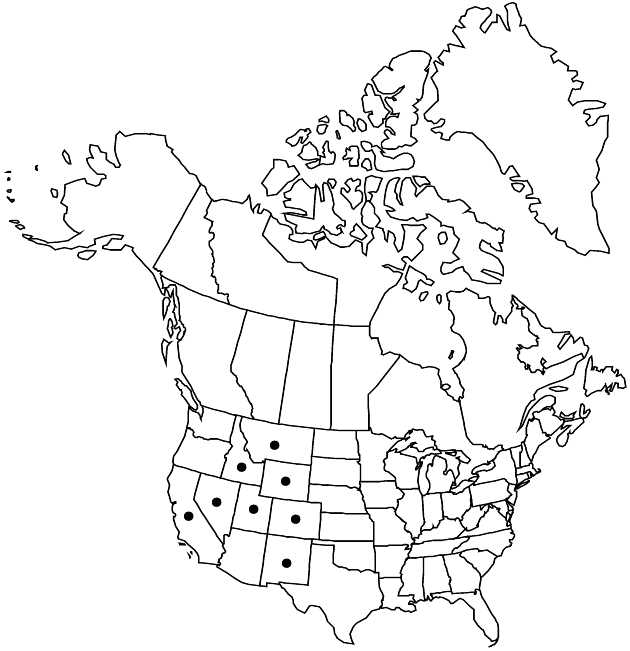Difference between revisions of "Townsendia leptotes"
Muhlenbergia 4: 69. 1908.
FNA>Volume Importer |
imported>Volume Importer |
||
| (3 intermediate revisions by 2 users not shown) | |||
| Line 6: | Line 6: | ||
|place=4: 69. 1908 | |place=4: 69. 1908 | ||
|year=1908 | |year=1908 | ||
| + | }} | ||
| + | |special_status={{Treatment/ID/Special_status | ||
| + | |code=E | ||
| + | |label=Endemic | ||
}} | }} | ||
|basionyms={{Treatment/ID/Basionym | |basionyms={{Treatment/ID/Basionym | ||
|name=Townsendia sericea var. leptotes | |name=Townsendia sericea var. leptotes | ||
|authority=A. Gray | |authority=A. Gray | ||
| + | |rank=variety | ||
|publication_title=Proc. Amer. Acad. Arts | |publication_title=Proc. Amer. Acad. Arts | ||
|publication_place=16: 85. 1880 | |publication_place=16: 85. 1880 | ||
| Line 36: | Line 41: | ||
-->{{#Taxon: | -->{{#Taxon: | ||
name=Townsendia leptotes | name=Townsendia leptotes | ||
| − | |||
|authority=(A. Gray) Osterhout | |authority=(A. Gray) Osterhout | ||
|rank=species | |rank=species | ||
| Line 50: | Line 54: | ||
|publication title=Muhlenbergia | |publication title=Muhlenbergia | ||
|publication year=1908 | |publication year=1908 | ||
| − | |special status= | + | |special status=Endemic |
| − | |source xml=https:// | + | |source xml=https://bitbucket.org/aafc-mbb/fna-data-curation/src/2e0870ddd59836b60bcf96646a41e87ea5a5943a/coarse_grained_fna_xml/V19-20-21/V20_450.xml |
|tribe=Asteraceae tribe Astereae | |tribe=Asteraceae tribe Astereae | ||
|genus=Townsendia | |genus=Townsendia | ||
Latest revision as of 20:03, 5 November 2020
Perennials, 1–3 cm (± pulvinate). Stems ± erect; internodes 0.1–1 mm, strigose. Leaves basal and cauline, blades spatulate to narrowly obovate, (8–)12–25(–40+) × 1–2(–3+) mm, ± fleshy, faces ± strigose to strigillose or glabrate. Heads usually ± sessile, rarely on scapiform peduncles 5–15+ mm. Involucres ± campanulate, 8–12(–20+) mm diam. Phyllaries 40–50+ in 4–5+ series, the longer ± lanceolate, 7–9(–12) mm (l/w = 2.5–5), apices acute to attenuate, abaxial faces sparsely strigose or glabrous. Ray florets 13–34+; corollas usually white or pinkish, seldom blue, adaxially, laminae 5–7(–12+) mm, abaxially usually glabrous, sometimes sparsely glandular-puberulent. Disc florets 40–80+; corollas 4–6+ mm. Cypselae 3+ mm, faces glabrous or sparsely hairy (hairs mostly at bases), hair tips glochidiform; pappi persistent; on ray cypselae ca. 25 lanceolate or subulate to setiform scales 0–1 or 5–8 mm; on disc cypselae ca. 30 subulate to setiform scales 5–8 mm. 2n = 18.
Phenology: Flowering Jun–Jul.
Habitat: Rocky ridges, sandy slopes
Elevation: (2300–)2900–3800 m
Distribution

Calif., Colo., Idaho, Mont., Nev., N.Mex., Utah, Wyo.
Discussion
Selected References
None.